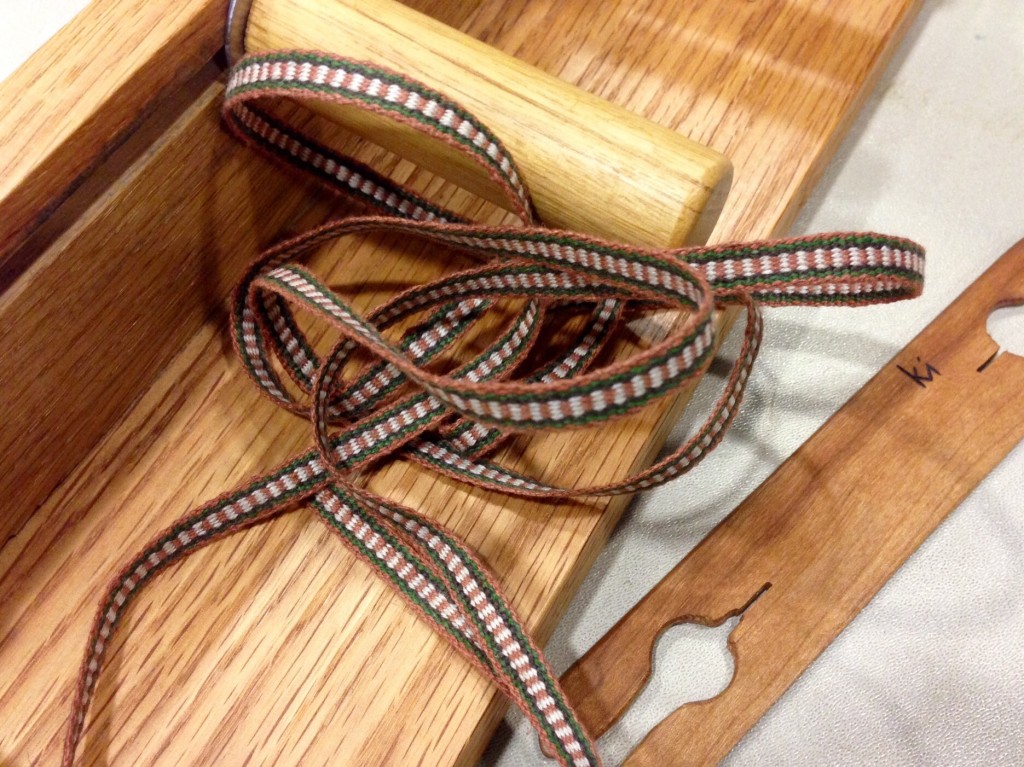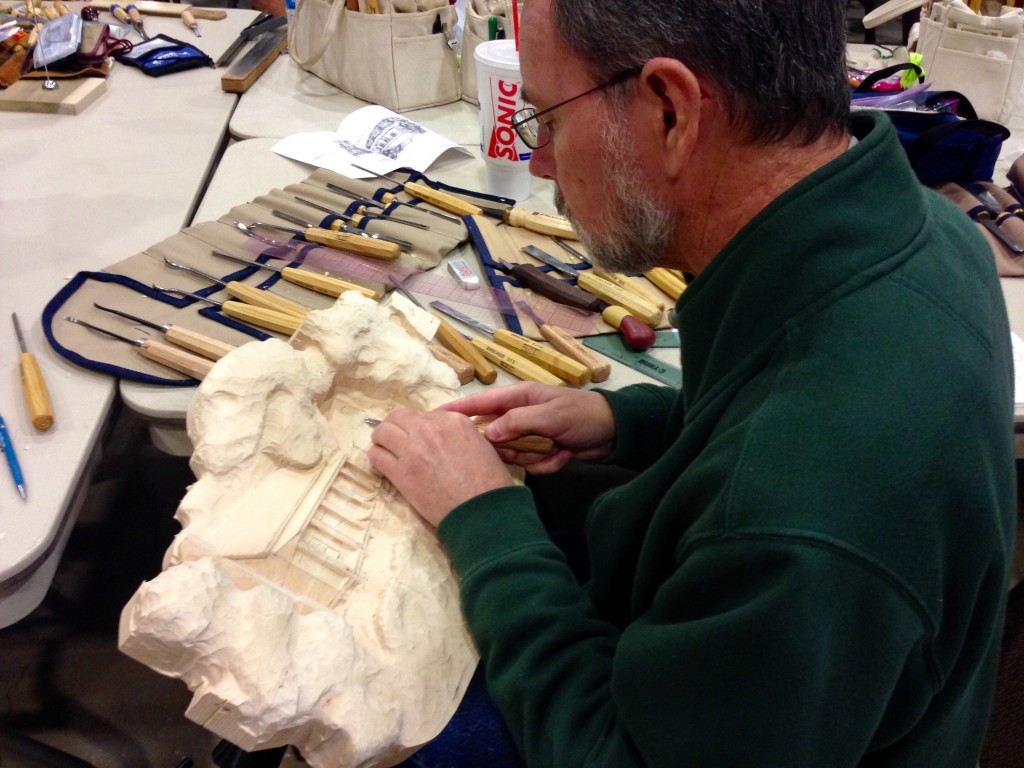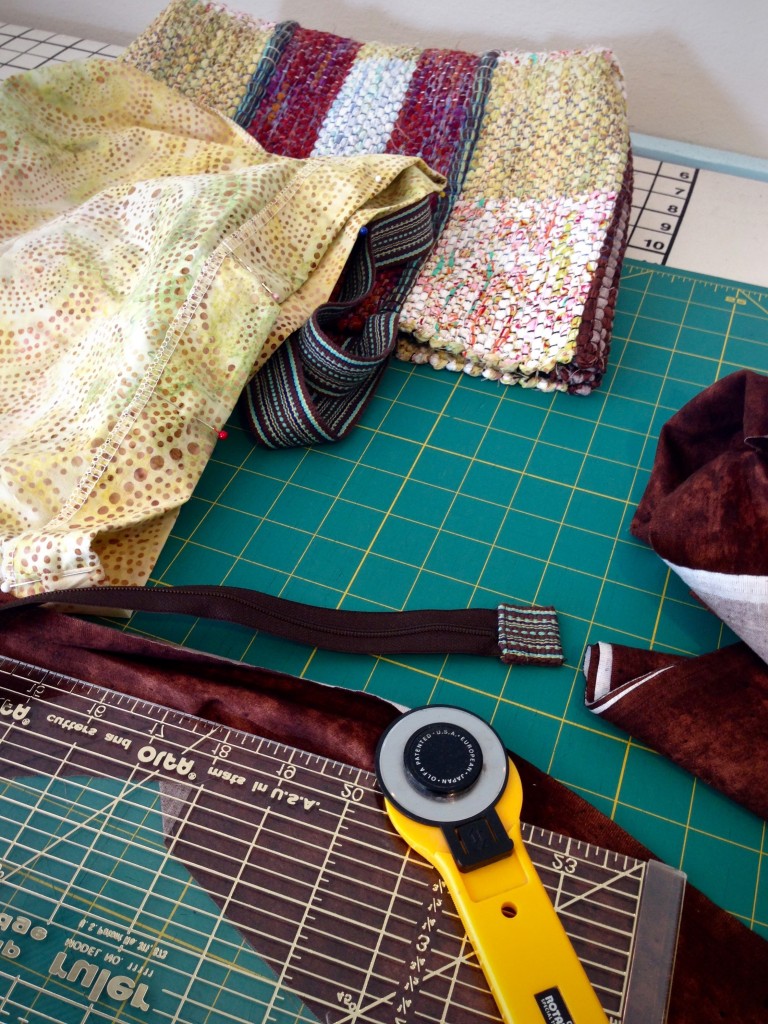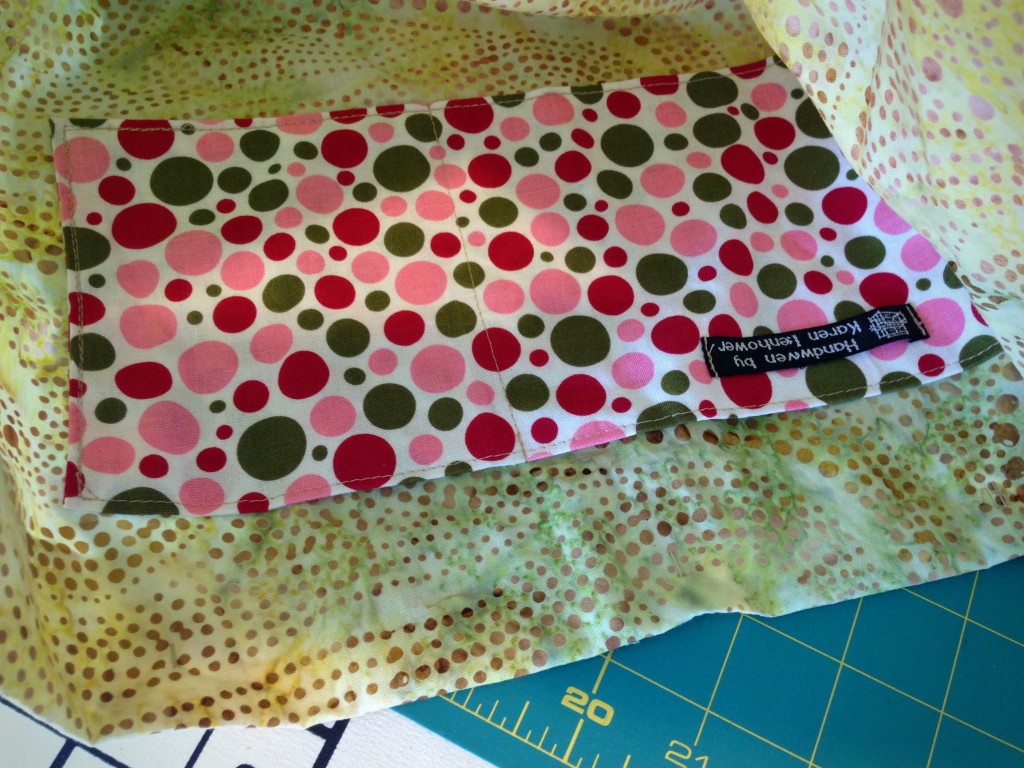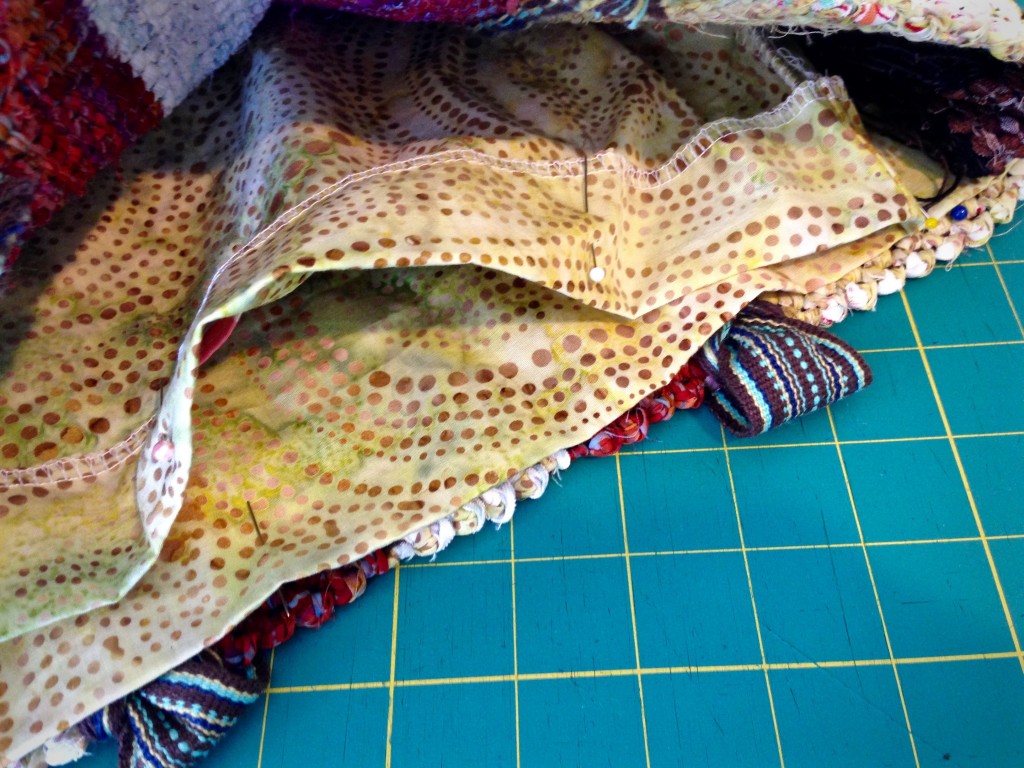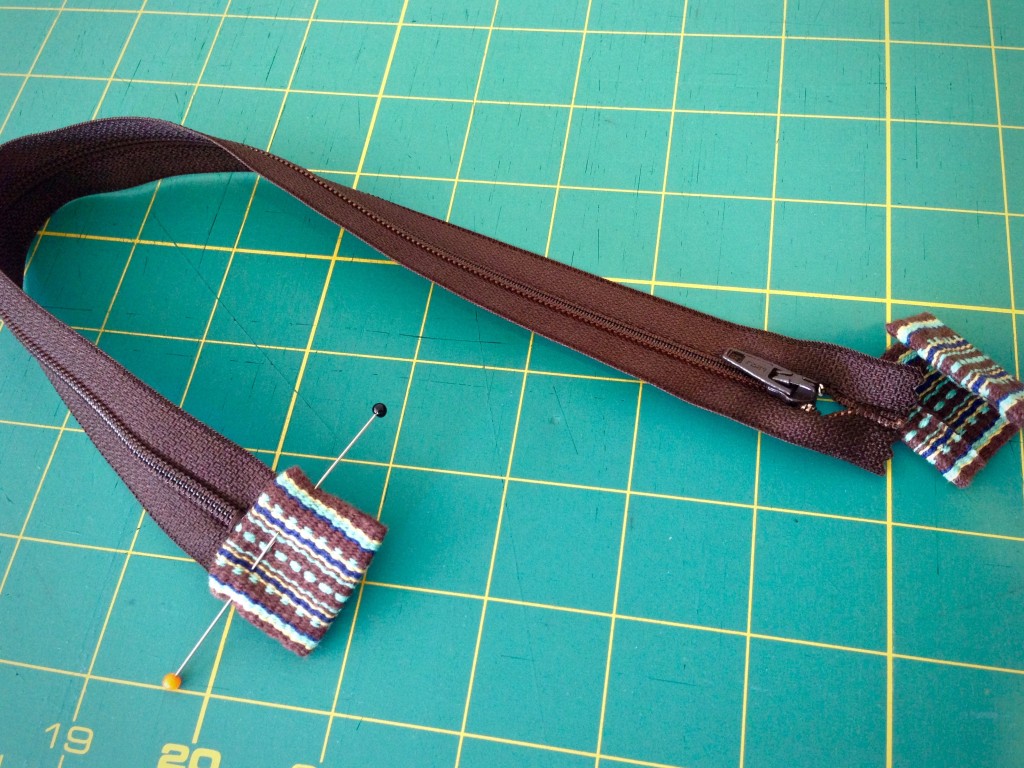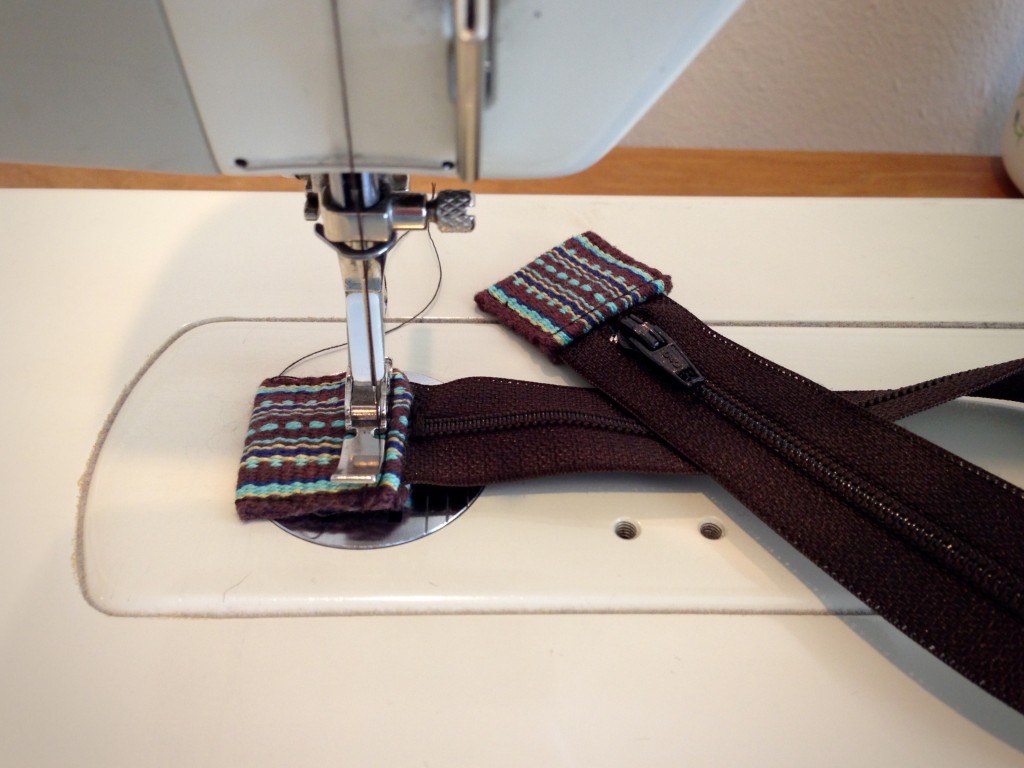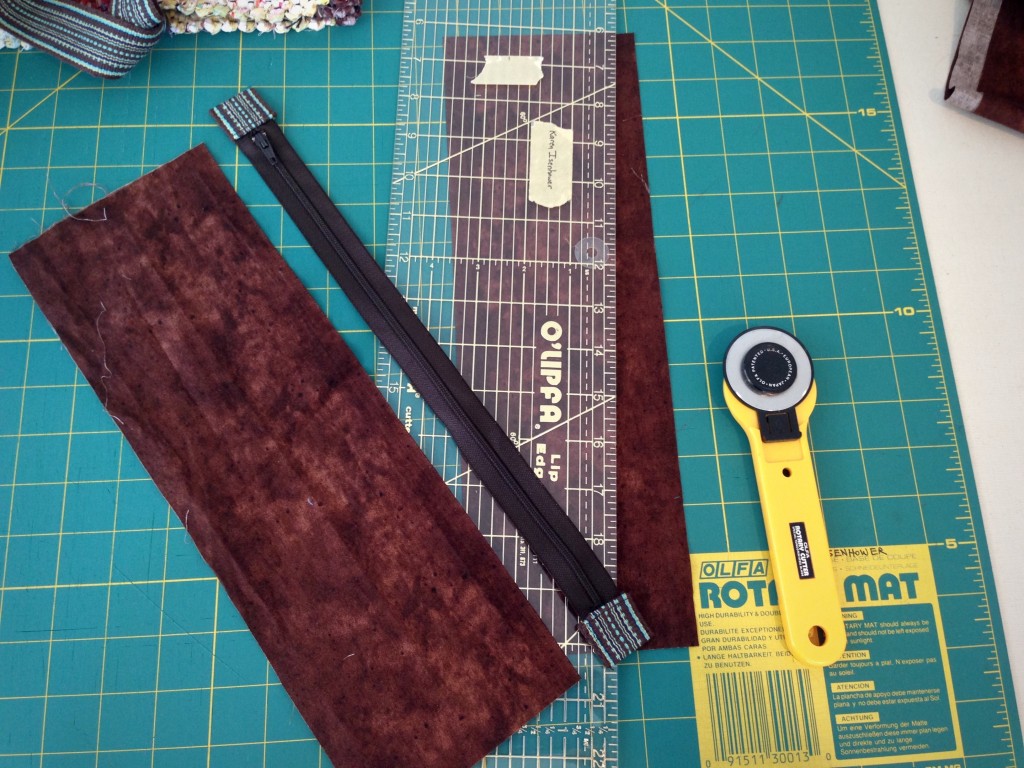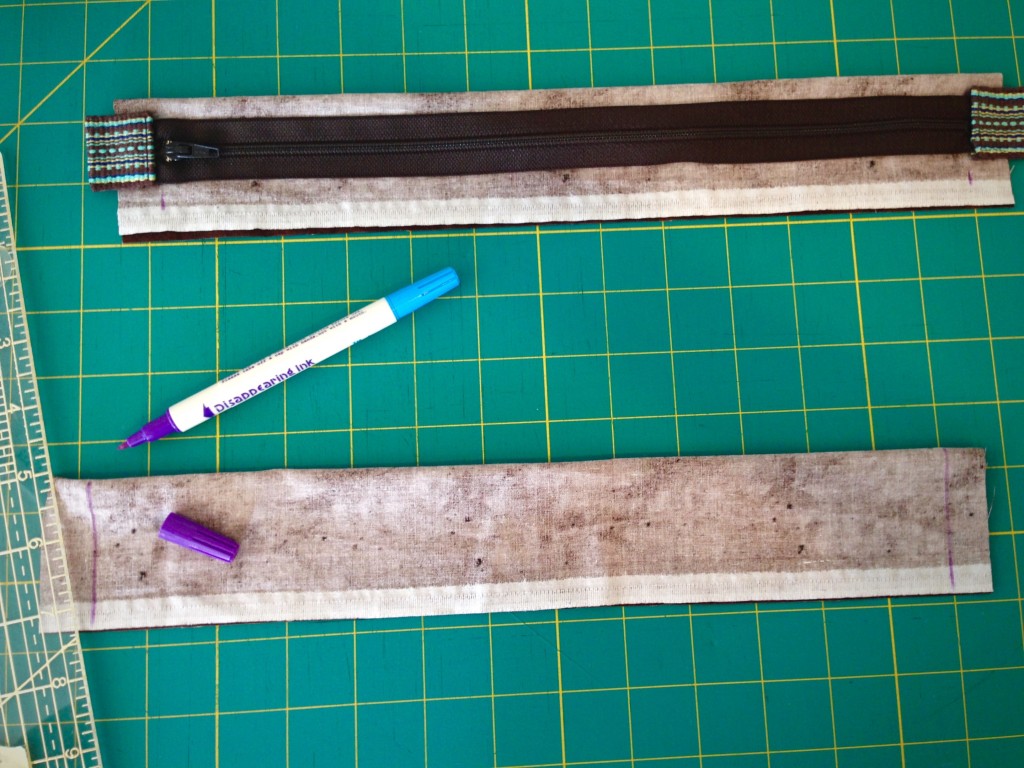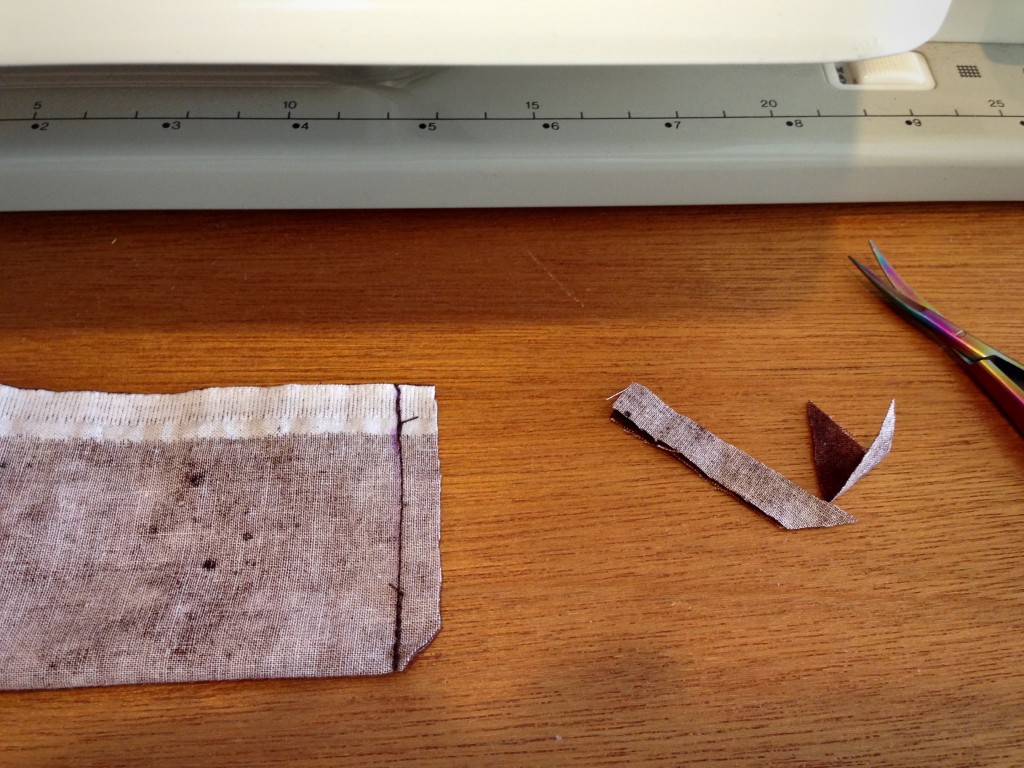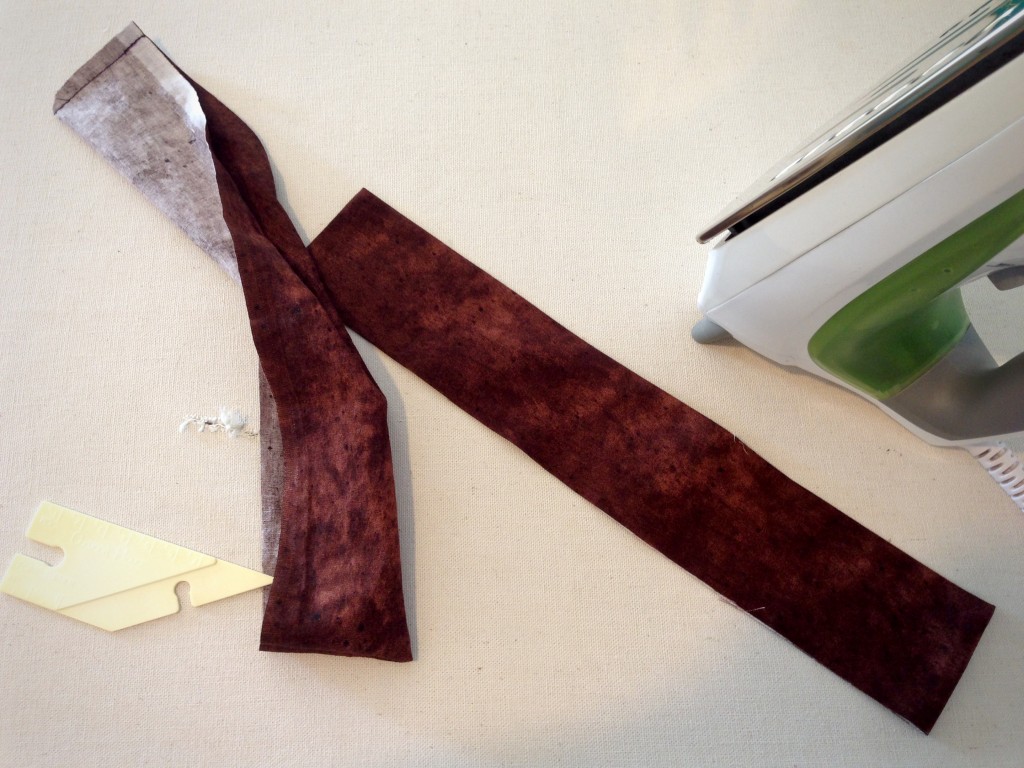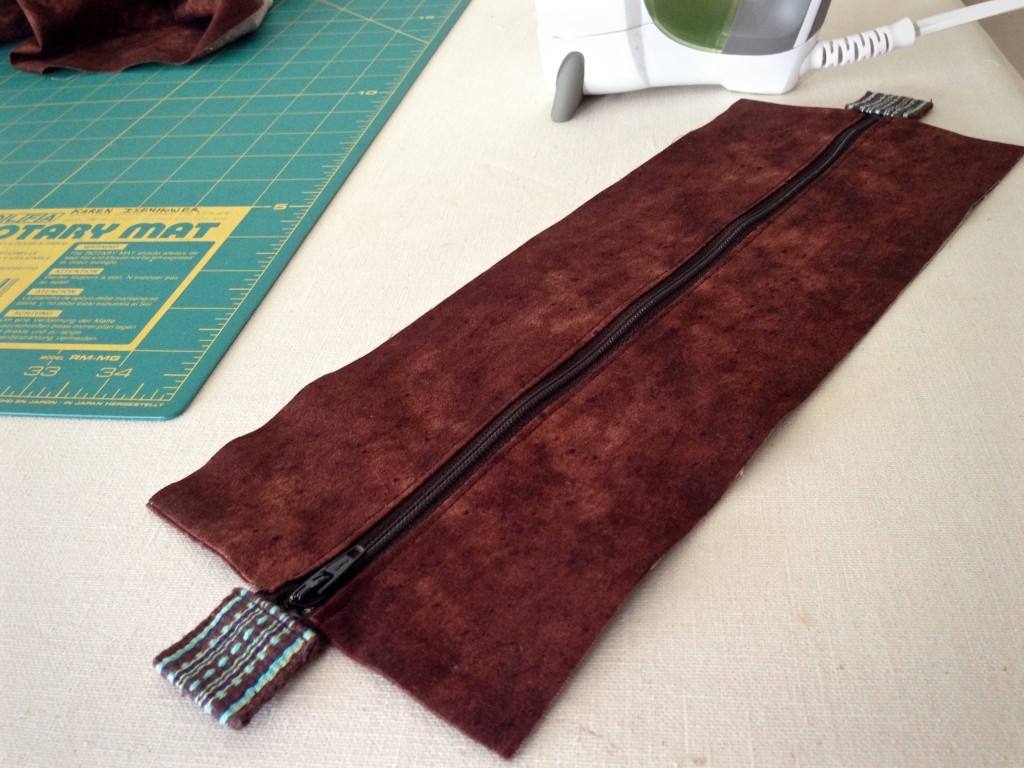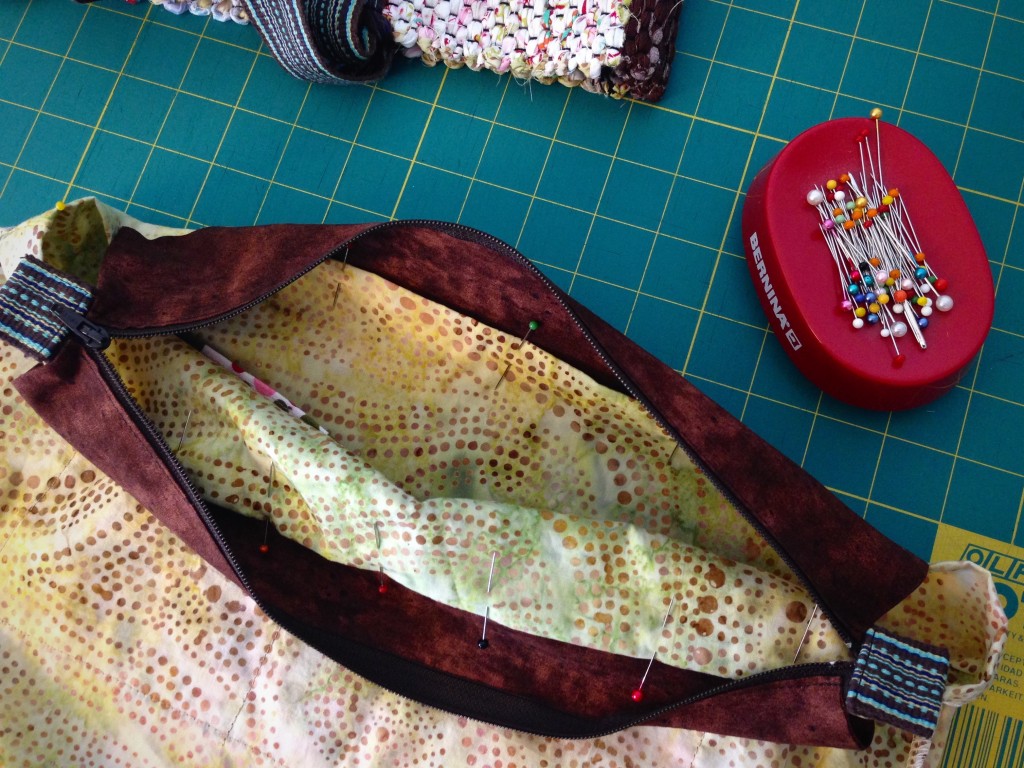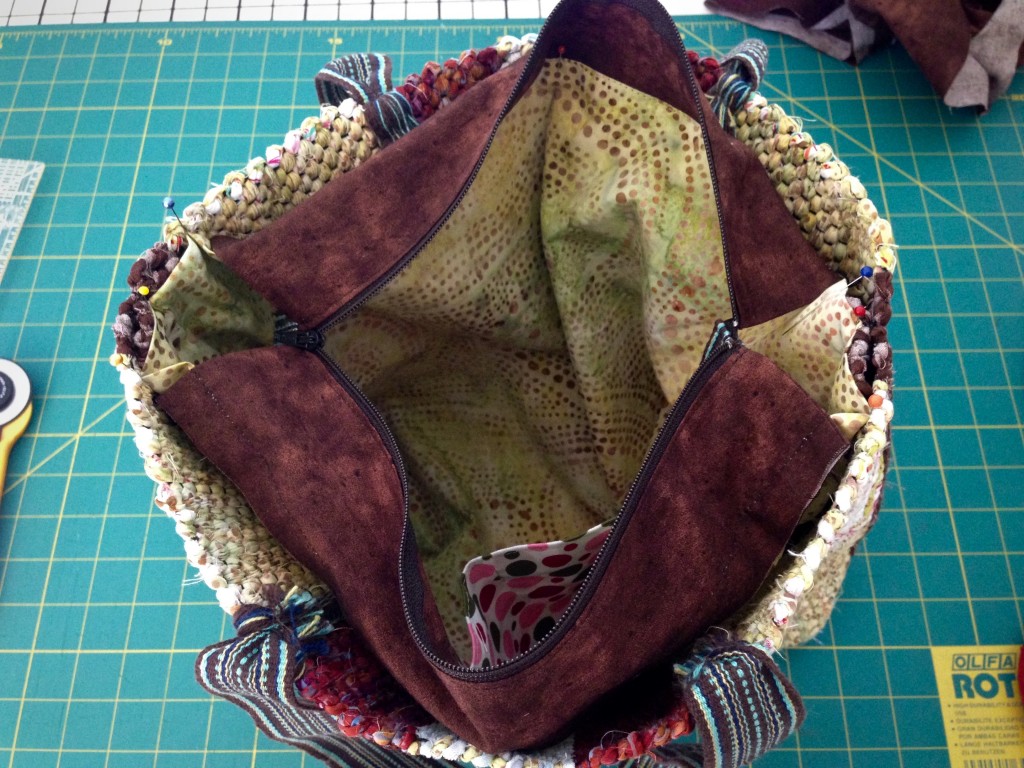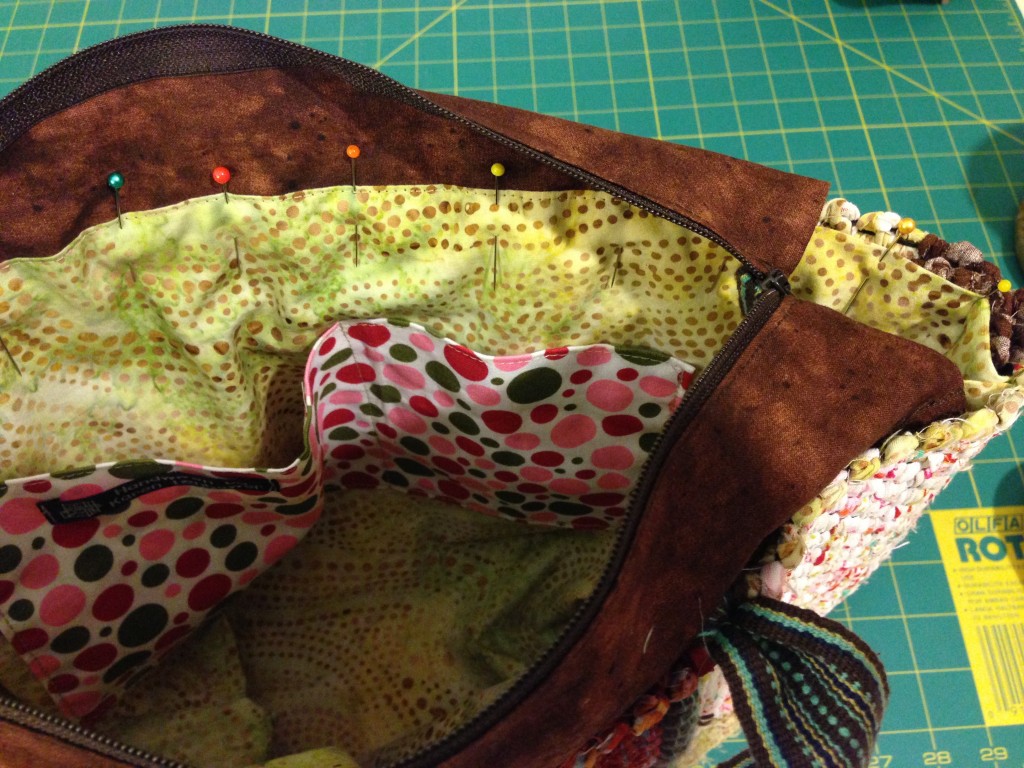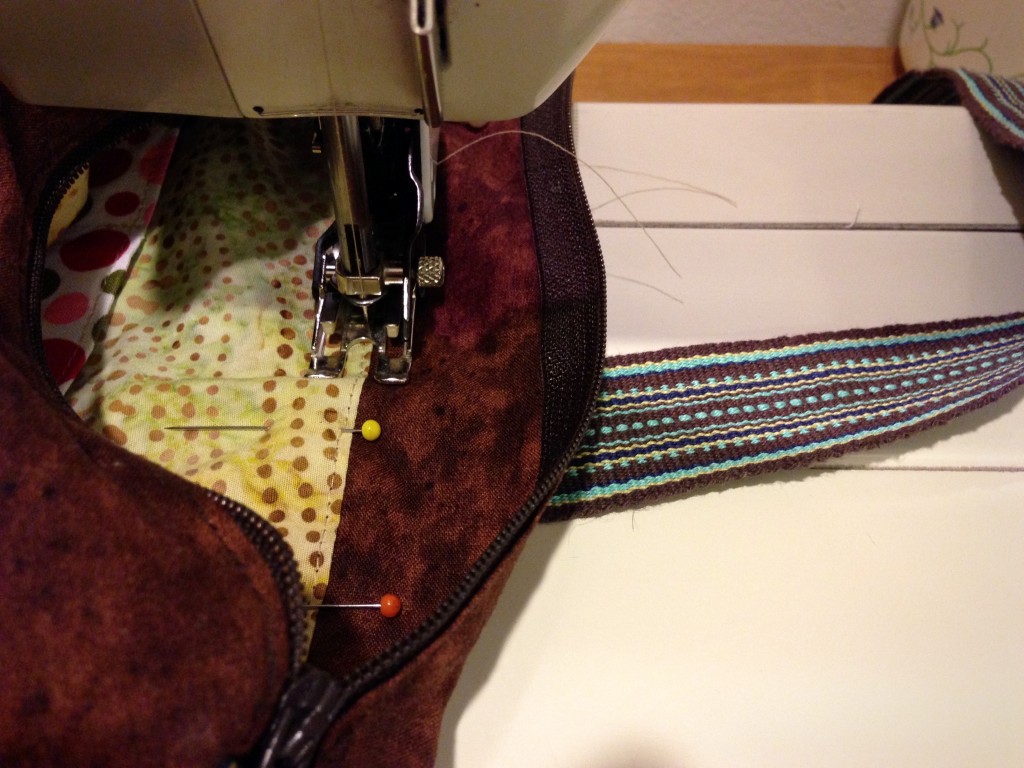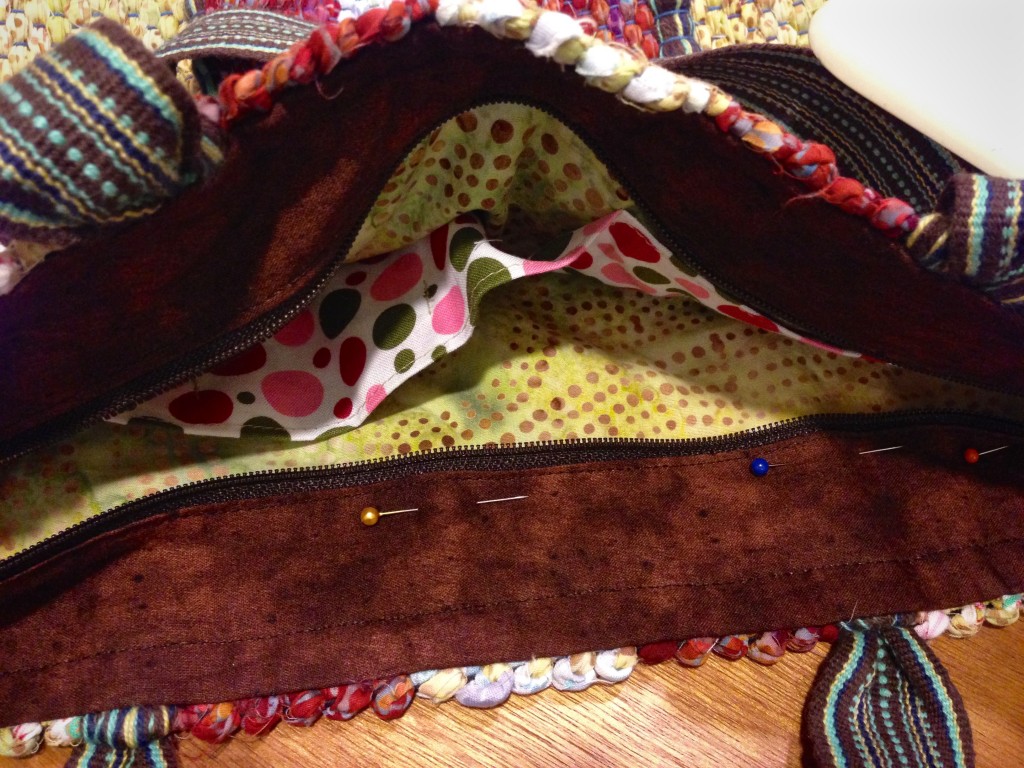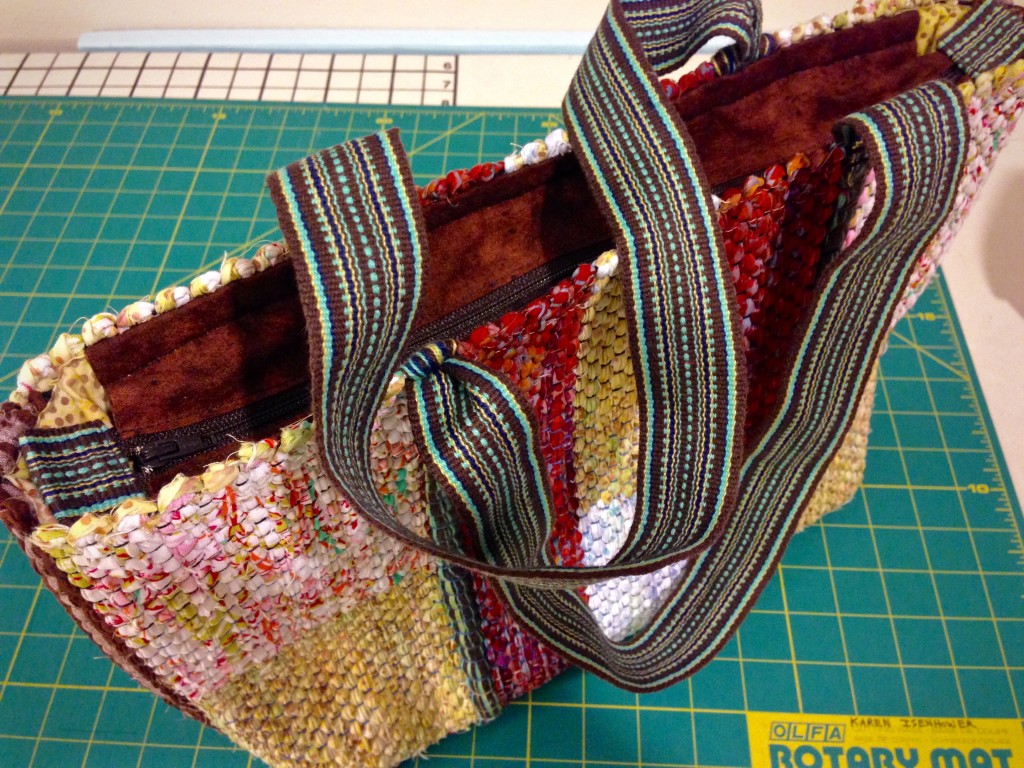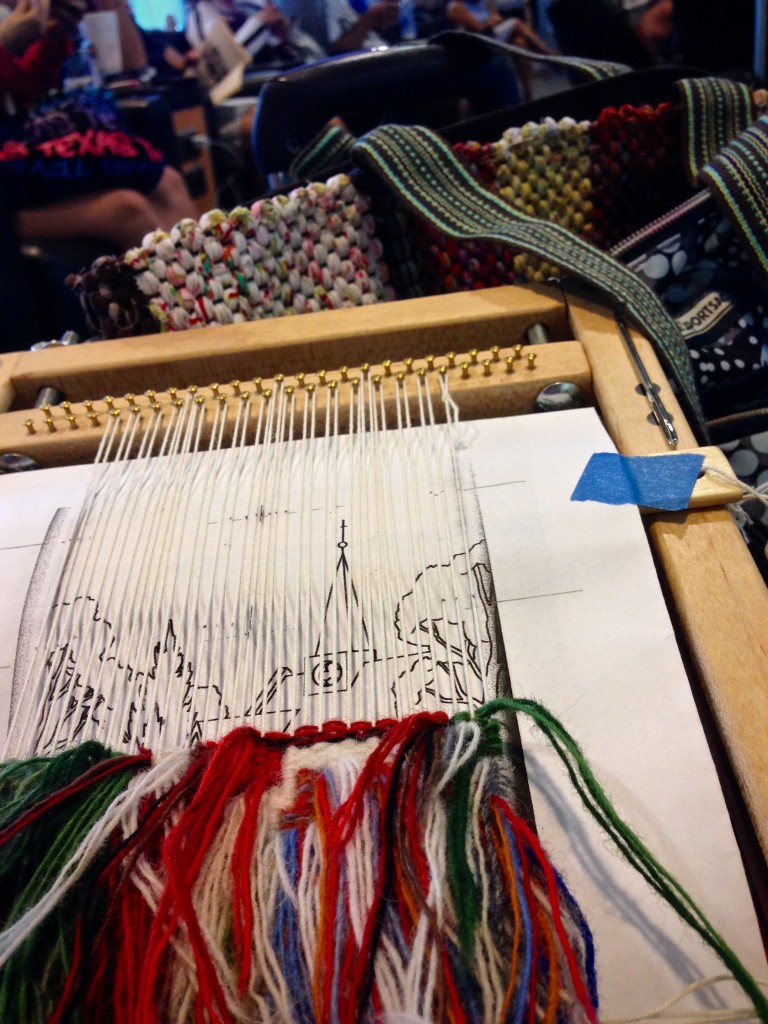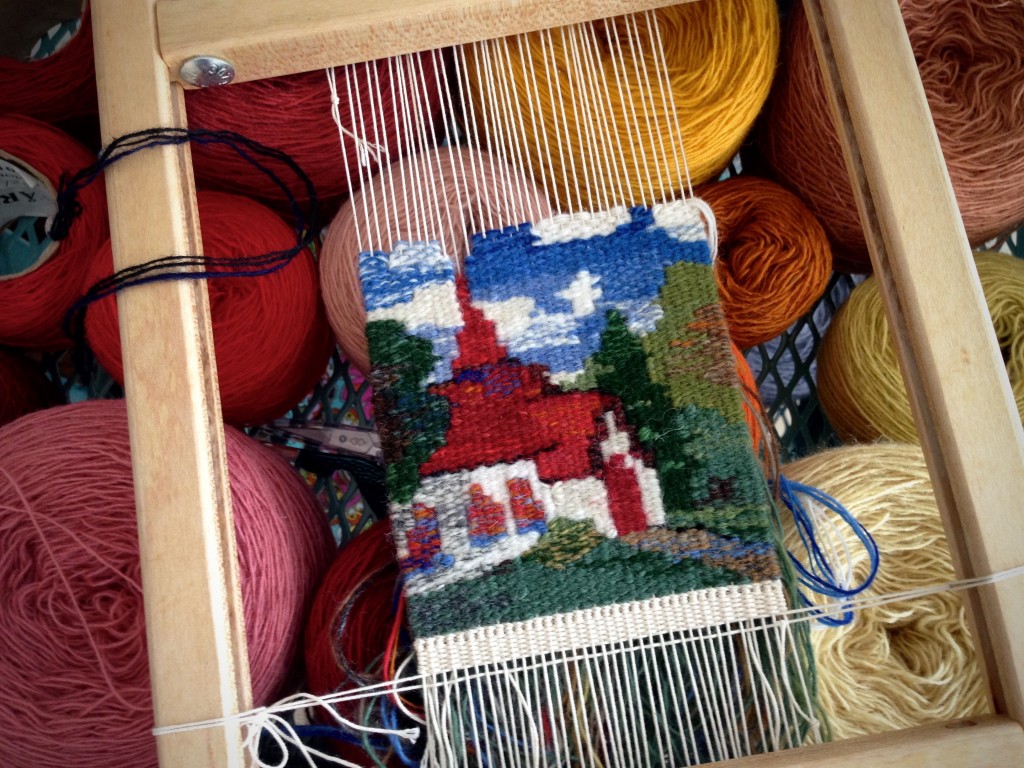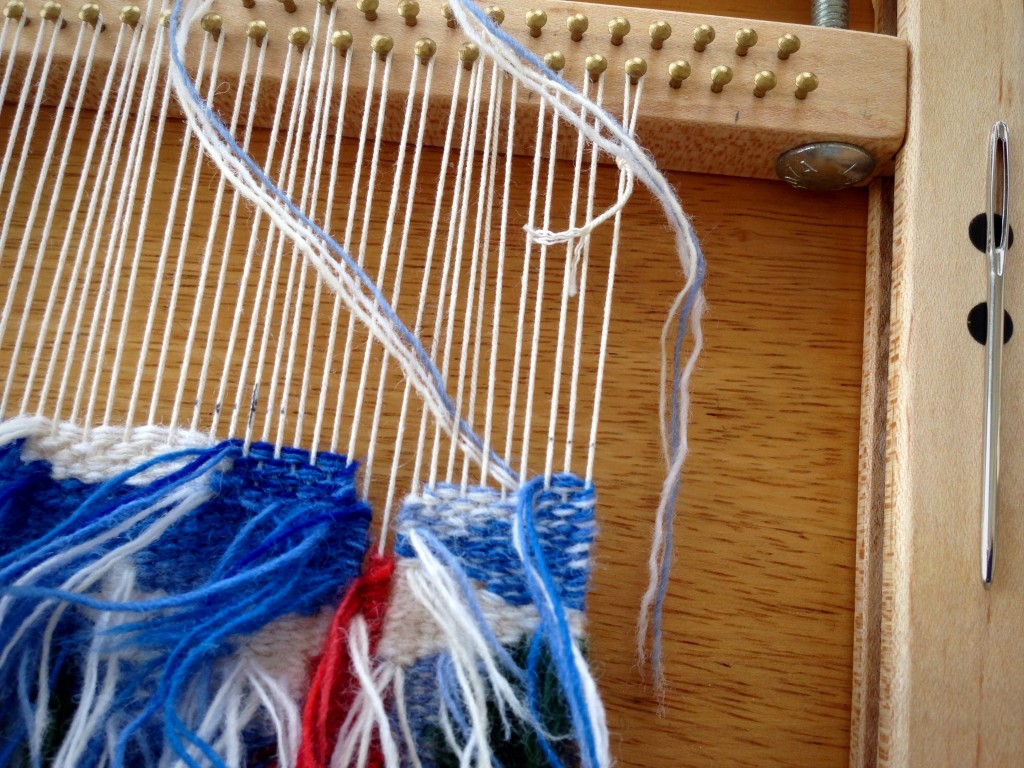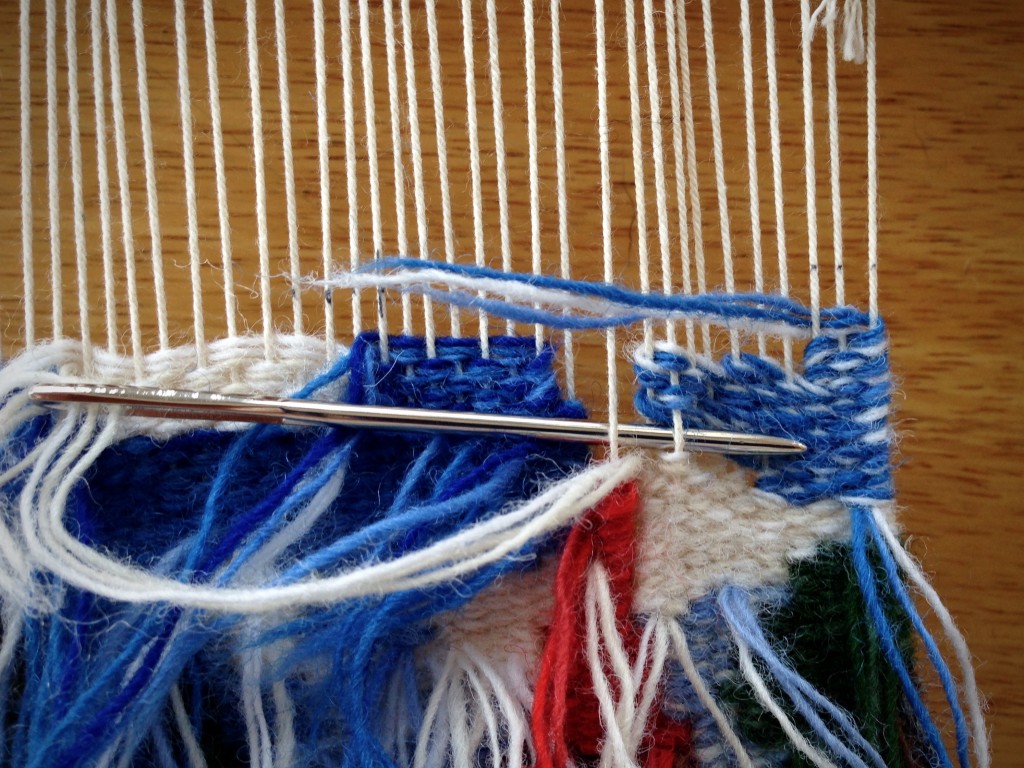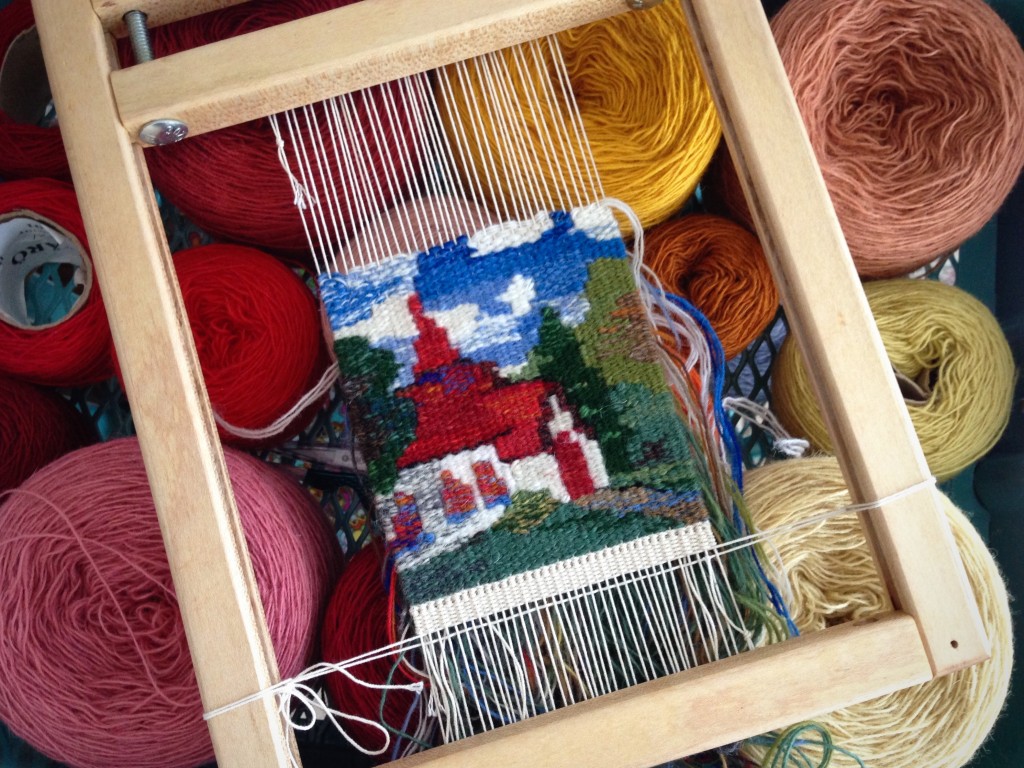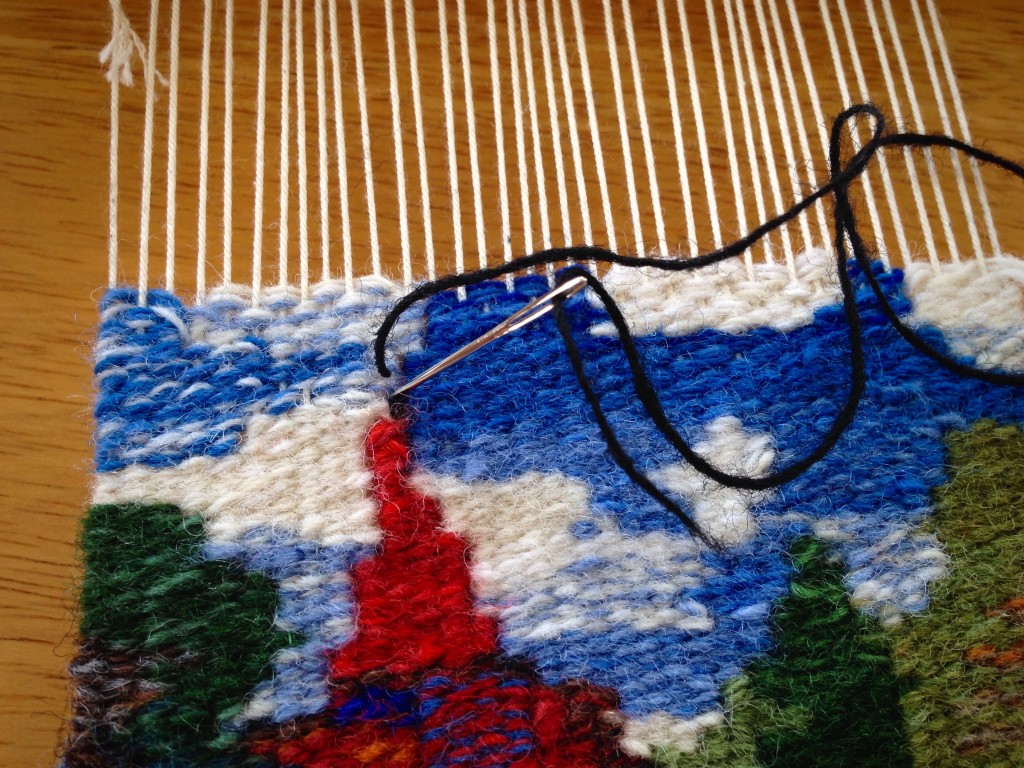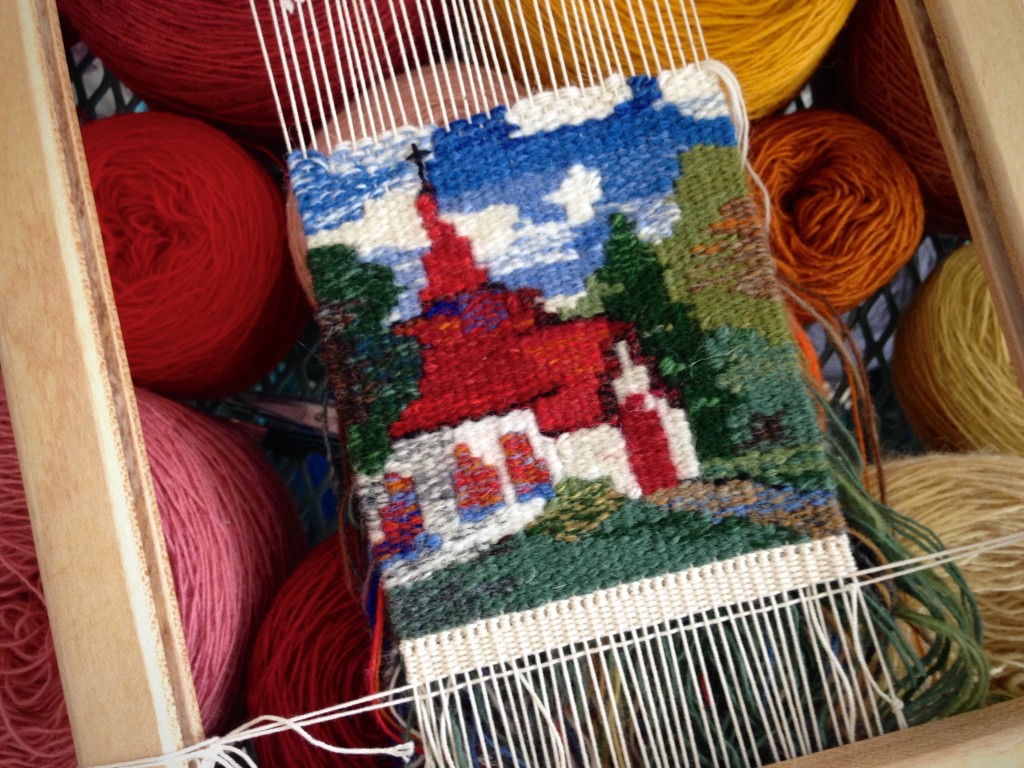I dream of doing four-shaft tapestry with rosepath threading on my floor loom. I’m not there yet. It is an ambitious goal. I am inching my way toward that goal by facing little problems on my tiny frame loom and working out solutions as I go. Learning to follow a cartoon is part of the process.
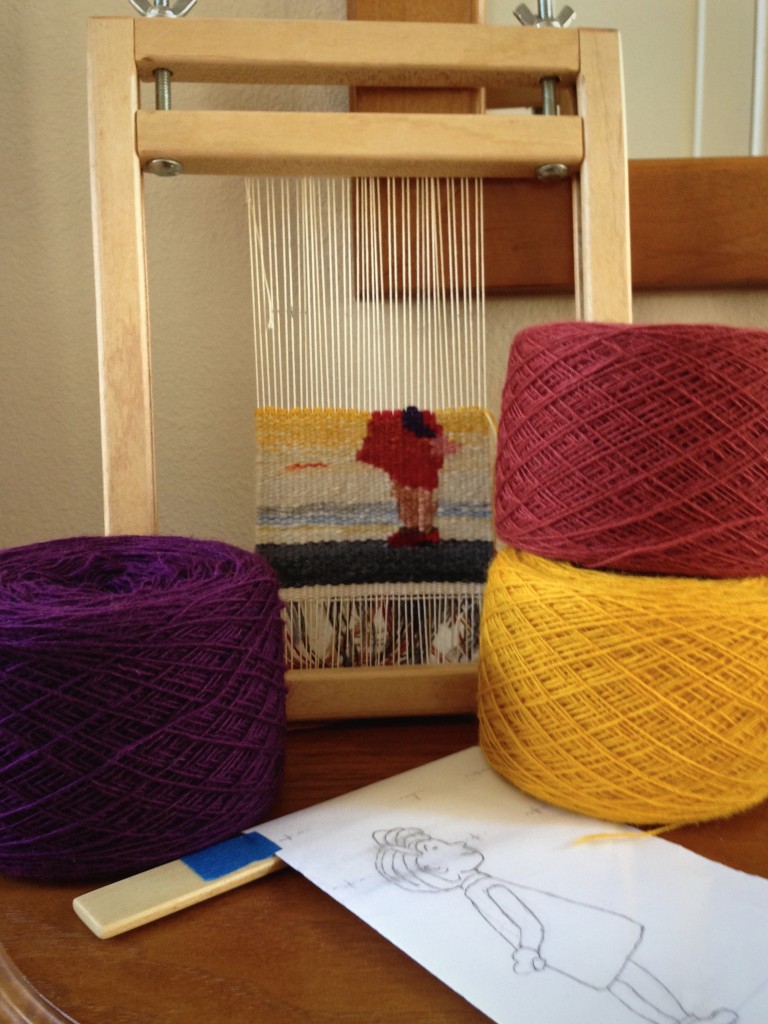
I derived the cartoon for this tapestry from a picture in a children’s book. The cartoon, held in place behind the warp threads, is my constant guide. As I make ongoing judgments about colors and other details, the cartoon keeps me on course and shows me the desired outcome.
Life is full of choices. If I purposely align myself with integrity, like a tapestry weaver following a cartoon, I have a guideline for decisions. But if I carelessly keep things in my path that tempt me, it’s like covering up parts of the cartoon with random post-it notes. The picture gets obscured. Our surroundings can set the stage for making good choices. And one good choice leads to another good choice. That’s the beauty of practicing with small things. When the time comes for four-shaft tapestry, I’ll be ready.
May you flourish in your surroundings.
A step at a time,
Karen







